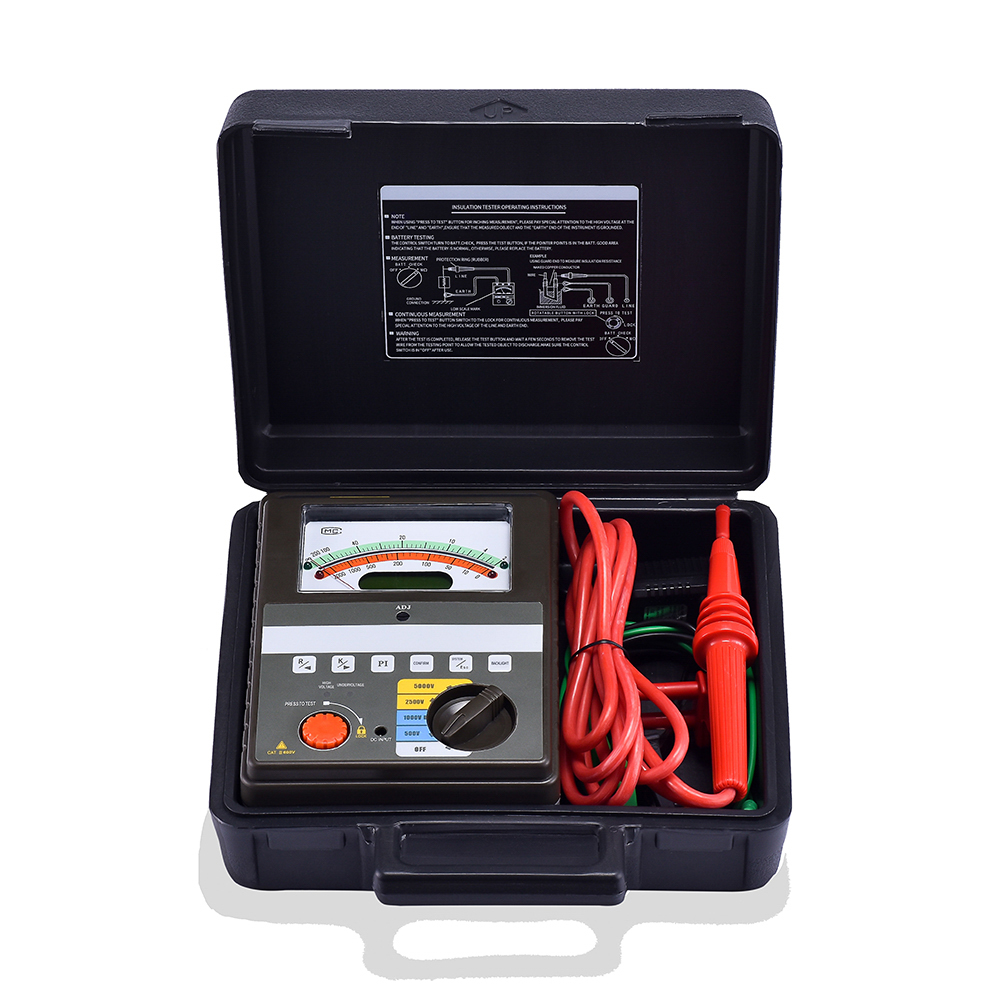The insulation resistancetesterunder UHV power can help many power workers conduct various power tests more conveniently.

Insulation resistance testing is one of the most common testing techniques applicable to various electrical equipment, so we do not apologize for taking this opportunity to study some basic questions related to this important topic that are often asked.
Q: What is the reason for conducting insulation resistance testing?
Answer: These types of tests are usually fast and relatively easy to perform, and only require commonly used testing equipment. However, it can provide valuable early warning for potential weaknesses in insulation, which, if not taken seriously, may ultimately lead to costly and destructive in use failures.
Q: What is the difference between polarization index (PI) testing and ordinary insulation testing?
Answer: In the polarization index test, the insulation resistance of the test object is continuously measured for 10 minutes. Then the tester will automatically display the ratio of the resistance measured 10 minutes later to the resistance measured one minute later. This ratio is the polarization index. If the insulation condition is good, the PI will be 2.0 or higher. If the result is lower than this value (the ratio may be less than 1.0), it indicates that there is a problem. This may not be worse than surface contamination, but all PI measurements below 2.0 indicate the need for further investigation.
Q: What is the purpose of dielectric absorption ratio (DAR) testing?
Answer: DAR testing, like PI testing, is a timed insulation test, but it involves a shorter duration. For DAR testing, measure the insulation resistance after applying the test voltage for 30 seconds and measure again after applying it for 60 seconds. DAR is the ratio of two results. Due to the shorter testing time, DAR measurements are usually lower than PI measurements. Usually, if the tested insulation condition is good, the DAR will be 1.4 or higher.
Q: What is step voltage (SV) insulation test?
Answer: For SV testing, conduct two or more short-term insulation tests at different test voltages. The first test uses a low test voltage, such as 500 V, and the second test uses an overvoltage, such as 2.5 kV. No matter what the test voltage is, an ideal insulator will give the same reading. However, if the resistance value displayed by the higher voltage measurement is lower than that of the low voltage test, it indicates that there may be cracks or gaps in the insulation.
Q: What is slope voltage insulation test?
Answer: Slope voltage testing can be seen as a "mild" alternative to SV testing. This test does not gradually increase the test voltage, but slowly raises the test voltage until the desired overvoltage is reached. The advantage of this program is that if the current in the tested insulation starts to rapidly increase during a stable increase in test voltage, the test can be terminated before the insulation is permanently damaged.Q: Some insulation testers include filtering function. What is the purpose of this and how can it improve the results?
Answer: Providing filtering is to reduce the impact of electrical noise on the results of the insulation tester. It is particularly useful for insulation testing in noisy environments such as industrial facilities and substations. The insulation tester may include hardware and software filtering. The performance of hardware filters is typically specified as the milliampere value for noise suppression.
Typically, standard instruments used for general and industrial applications will provide 3 mA noise suppression. The high-end model is suitable for substations and similar demanding locations, providing noise suppression up to 8 mA. Additional software filtering is usually provided to eliminate instantaneous erroneous measurements and improve the stability of readings.
Q: Can a universal insulation tester be used to test transformers?
Answer: The universal insulation tester can be used for on-site testing of transformers, but due to the use of a complex oil cellulose insulation system, it is difficult to accurately interpret the test results. The insulation resistance test is not only the first test for a stopped transformer, but also favored as it can quickly determine whether the insulation system has completely failed and serves as the correct test for evaluating the insulation of the transformer core. Otherwise, specialized transformer testing equipment should be used to perform insulation testing on the transformer.



















